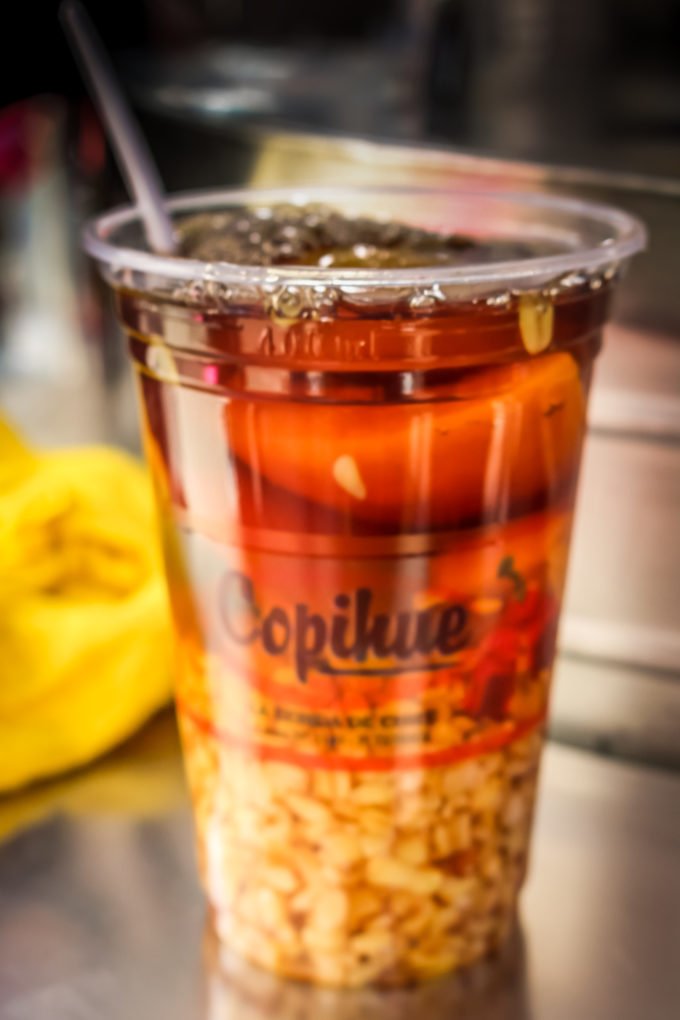
Peaches and Wheat Doesn’t Have Quite the Same Ring To It, But Trust Us, It’s Delicious

Peaches and Wheat Doesn’t Have Quite the Same Ring To It, But Trust Us, It’s Delicious
Rico mote con huesillo in Santiago
Plaza de Armas, Santiago’s central plaza, is crowded and noisy on a Sunday afternoon. Tourists take pictures of the famous monuments, fountains, and buildings lining the square. Kids chase pigeons and play among the trees. Artists sell their wares on the street, performers play music and dance, and women in traditional dress twirl their skirts.
We are in Santiago on a short stopover on our way to Easter Island, and I’m glad we decided to spend some time in the bustling square before heading somewhere far more remote.
The square is right above the Plaza de Armas metro station. The station entrance is surrounded by street vendors selling everything from clothes, to phone chargers to food. It all reminds me of my hometown, Mumbai, and I suddenly yearn for the street vendors selling freshly squeezed ganga jamuna, a fresh juice made with oranges and sweet limes. That’s when I spot the cart selling some kind of orange-colored drink.
At first glance, I can’t tell what it is. An elderly street vendor serves a deep orange liquid, and what looks like hominy, in a plastic cup. There are several other carts just like his down the road. A few families have lined up for his wares, so we join them. When it’s our turn, I try, in broken Spanish, to ask what it is.
A few customers help me out, and a couple of minutes later, I am the proud owner of a small cup of rico mote con huesillo—rich wheat with peaches—and a basic understanding of its ingredients: dried peaches, sugar, water, cinnamon, and wheat or barley. Dried peaches are cooked in sugar syrup and served chilled and mixed with cooked husked wheat, which give the drink a nice, chewy texture.
We sit down on the sidewalk, like everyone else, and start drinking. The first sip is sweet, cool, and refreshing, and we know we have stumbled upon something good. By happy coincidence, we have also discovered a beloved national drink. The Chileans have an expression: “Más chileno que el mote con huesillo” (more Chilean than mote con huesillo).
Peaches and wheat both have long histories in Chile. The Spanish conquistadors introduced wheat to the indigenous Mapuche people, who then incorporated it into their diet, along with the peaches that were grown in colonial Chile. These two ingredients weren’t paired until the 19th century, however. And now, mote con huesillo provides stiff summertime competition to soda and ice cream.
It’s also popular because it quenches both hunger and thirst. I can vouch for that: one serving was enough for three of us. It may not have been the ganga jamuna I had been craving, but it was just as refreshing and satisfying.